Singapore’s roads are governed by a meticulously designed system of traffic signs, signals, and rules to ensure safety and efficiency. As a driver, understanding these signs and signals is not just a legal requirement but also a critical aspect of responsible road use.
 Driving in Singapore requires more than just technical skill—it demands awareness of the country’s unique road infrastructure and regulations. With its high-density traffic and advanced systems like the Electronic Road Pricing (ERP) scheme, Singapore’s roads are equipped with signs and signals tailored to local conditions. This article will help you decode these visual cues, ensuring safer journeys for all road users.
Driving in Singapore requires more than just technical skill—it demands awareness of the country’s unique road infrastructure and regulations. With its high-density traffic and advanced systems like the Electronic Road Pricing (ERP) scheme, Singapore’s roads are equipped with signs and signals tailored to local conditions. This article will help you decode these visual cues, ensuring safer journeys for all road users.
The Importance of Road Signs and Traffic Signals
Road signs serve as visual instructions for drivers, pedestrians, and cyclists alike. They help maintain order on the roads, prevent accidents, and ensure that everyone can navigate safely. Understanding these signs is not just about passing a driving test; it’s about ensuring safety for yourself and others on the road.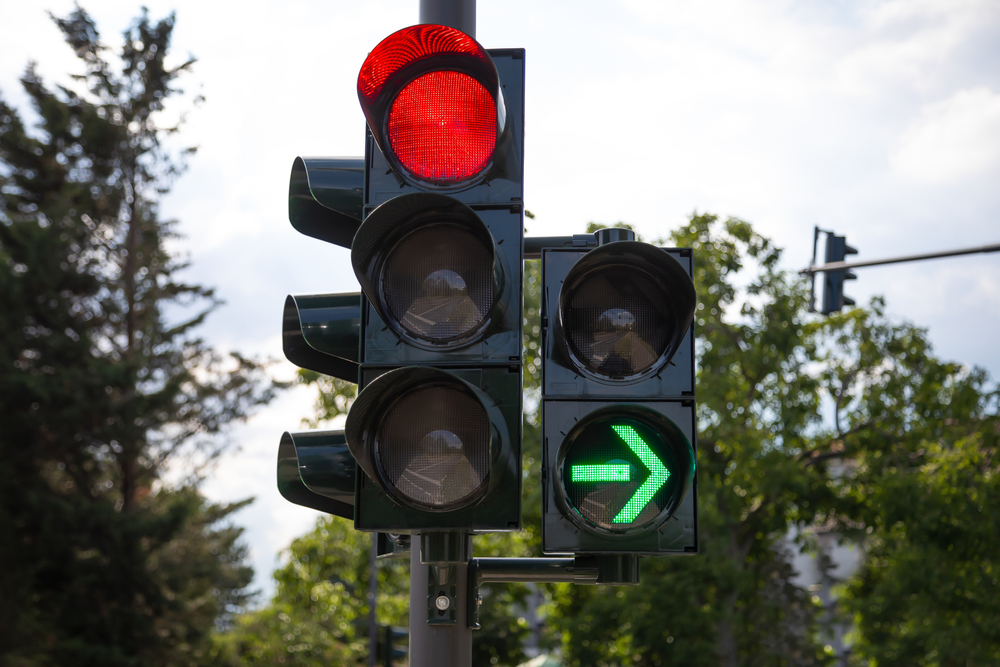 Traffic signals, including stoplights and arrows, play a vital role in controlling the flow of traffic at intersections. They provide critical information about when to stop, yield, or proceed, helping to prevent collisions in busy areas.
Traffic signals, including stoplights and arrows, play a vital role in controlling the flow of traffic at intersections. They provide critical information about when to stop, yield, or proceed, helping to prevent collisions in busy areas.
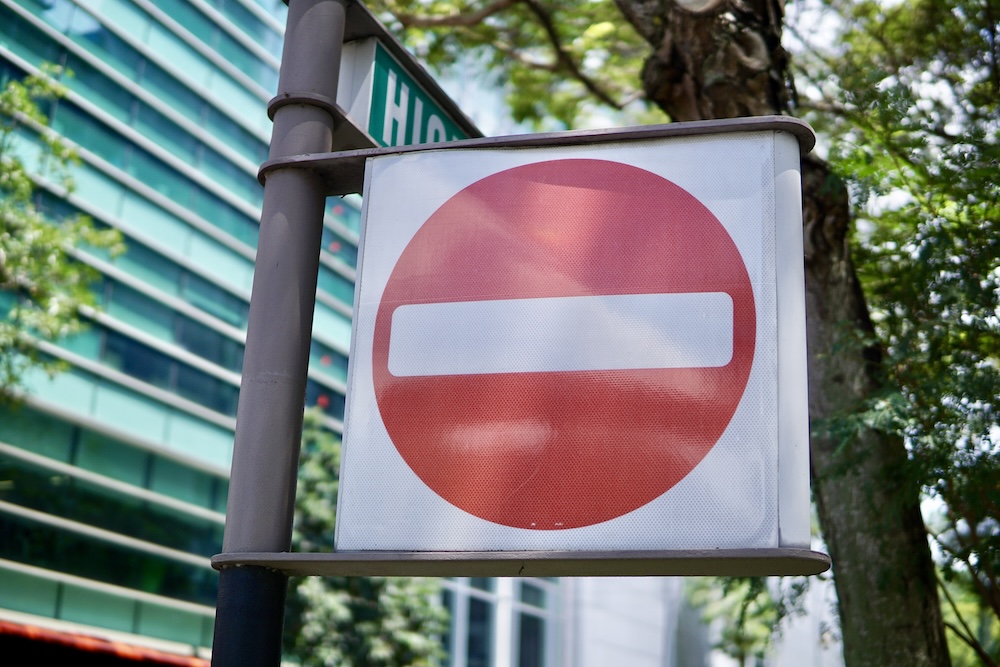
Regulatory Signs: The Rules You Must Follow
Regulatory signs in Singapore inform drivers of obligations, restrictions, or prohibitions they must adhere to. These signs are essential for maintaining order on the roads.
Types of Regulatory Signs
- Prohibitive Signs
- No Entry: A red circular sign with a white horizontal bar indicates areas where entry is prohibited.
- No U-Turn: A red circular sign with a U-turn arrow crossed out prohibits U-turns at specific junctions.
- Mandatory Signs
- Turn Left/Right Only: Blue circular signs with directional arrows indicate that vehicles must turn in the specified direction.
- Bus Lane Restrictions: Blue rectangular signs indicate bus lane operating hours during which vehicles (except buses) are prohibited from using the lane.
- Speed Limit Signs
Speed limits are displayed on circular signs with red borders and numerical values (e.g., 50 km/h). Special zones like School Zones enforce reduced limits of 40 km/h during specific hours, while Silver Zones prioritise pedestrian safety by enforcing lower speed limits as indicated on accompanying signs.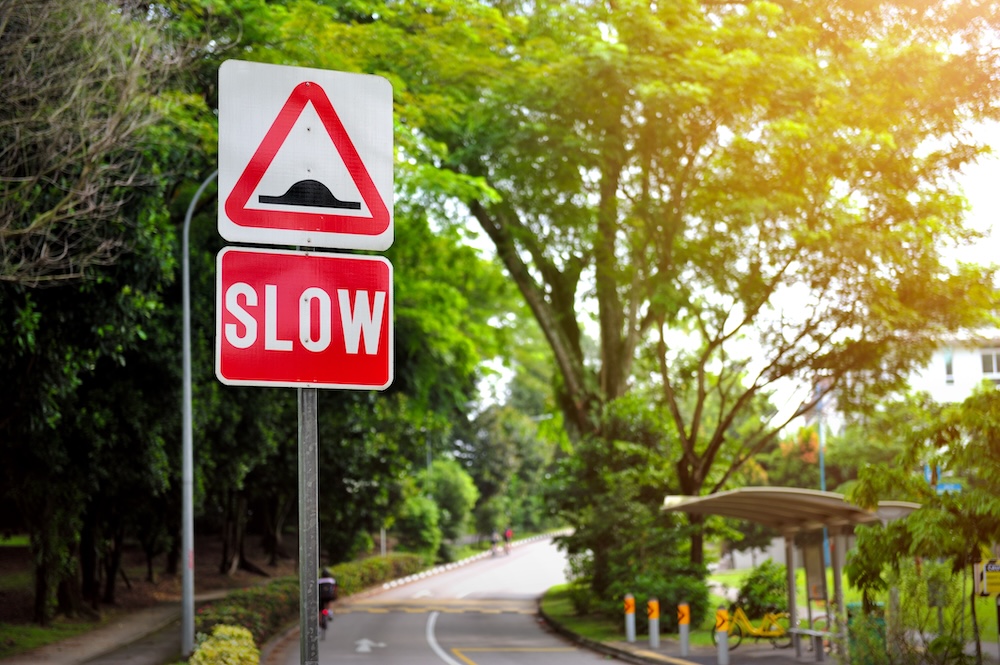 Warning Signs: Alerting Drivers to Hazards Ahead
Warning Signs: Alerting Drivers to Hazards Ahead
Warning signs in Singapore are triangular with red borders and black symbols or text inside. These signs alert drivers to potential hazards or changes in road conditions ahead.
-
- Pedestrian Crossing Ahead: Indicates the presence of a pedestrian crossing; drivers should slow down and be prepared to stop.
- Road Narrows Ahead: Warns drivers that the road will narrow, requiring caution when navigating through the area.
- Hump Ahead: Alerts drivers to upcoming speed bumps to encourage slower speeds for safety.
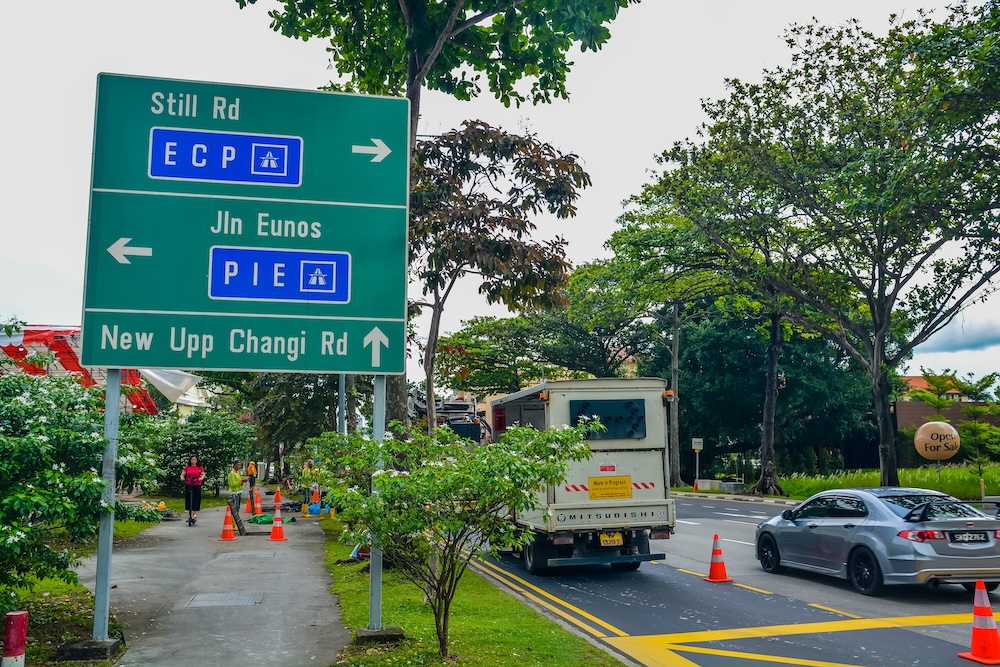
Informational Signs: Guidance for Navigation and Facilities
Informational signs provide directions, distances, or information about nearby facilities and attractions. These signs are typically rectangular with green or blue backgrounds.
-
-
- Expressway Exit Signs: Green rectangular signs display exit numbers and destinations along expressways like the PIE or CTE.
- Parking Guidance Signs: Blue rectangular signs indicate available parking spaces in nearby car parks, often accompanied by real-time digital displays showing vacancy numbers.
- Tourist Attraction Signs: Brown rectangular signs highlight places of interest such as Gardens by the Bay or Sentosa Island.
-
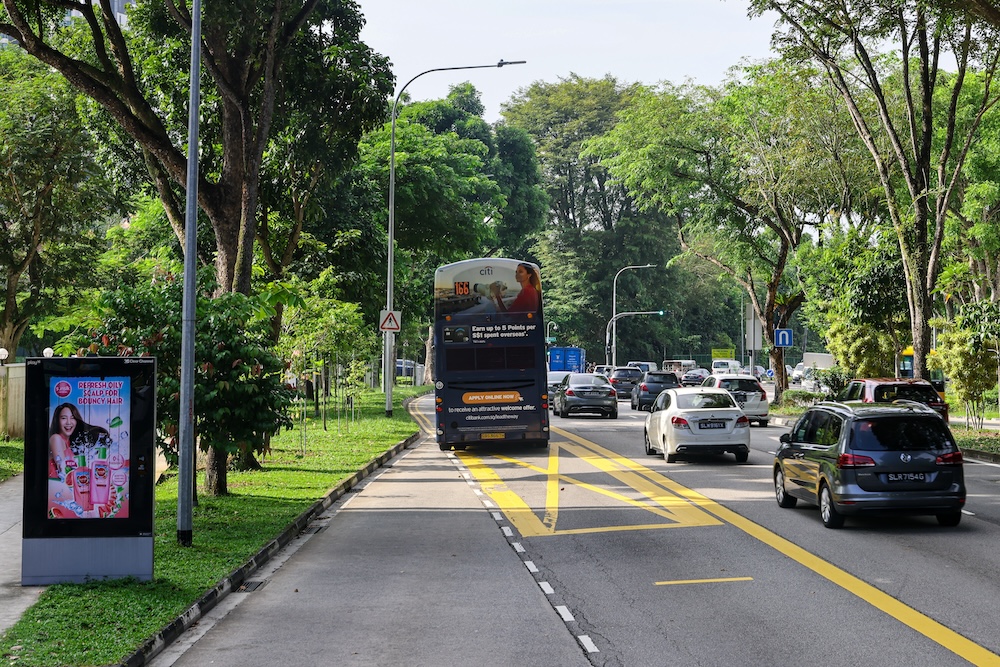 Unique Road Markings in Singapore
Unique Road Markings in Singapore In addition to standard road markings, Singapore has specific markings that drivers must understand to avoid penalties:
-
- Bus Priority Boxes: These yellow boxes near bus stops require vehicles to give way to buses re-entering traffic during bus lane operating hours. Failure to yield can result in fines or demerit points.
- Zebra Crossings with Zigzag Lines: Zigzag lines before zebra crossings prohibit parking or overtaking within the marked zone to ensure pedestrian safety.
- Yellow Box Junctions: Vehicles must not stop inside yellow box markings unless turning right and waiting for oncoming traffic to clear. Blocking these boxes disrupts traffic flow and incurs penalties.
-
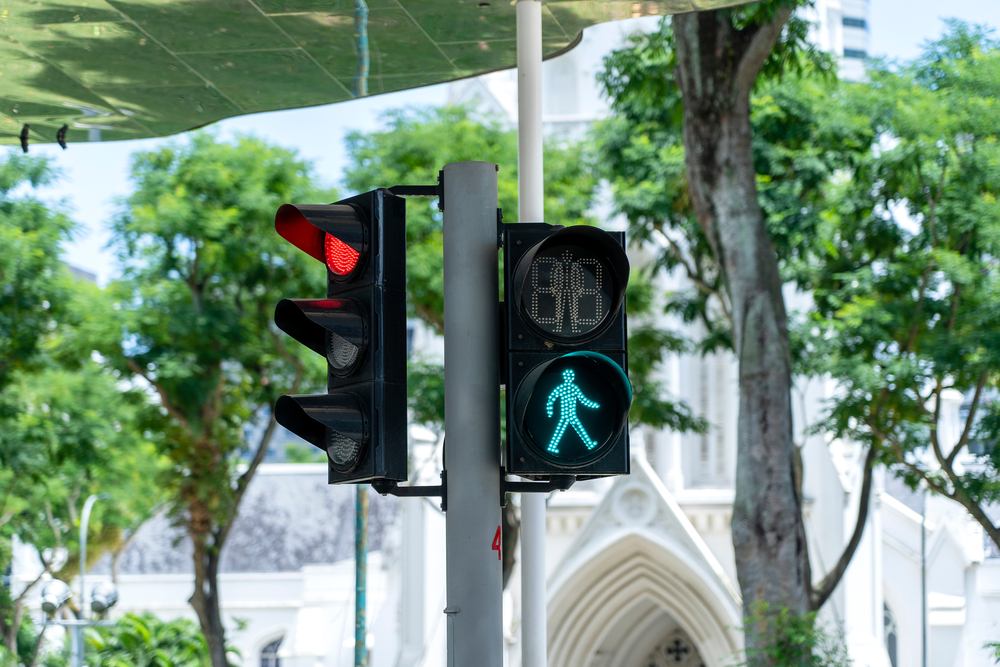 Traffic Signals in Singapore: What You Need to Know
Traffic Signals in Singapore: What You Need to Know
Singapore’s traffic signals are designed for clarity and efficiency, incorporating features like countdown timers for pedestrians and adaptive systems for vehicles.
Standard Traffic Lights
-
-
- Red Light: Stop completely before the stop line.
- Amber Light: Prepare to stop unless it is unsafe to do so.
- Green Light: Proceed if the way is clear.
-
Arrow Signals
-
-
- Green arrows indicate permitted turns, while red arrows prohibit turning movements.
- Amber arrows warn that turning opportunities are ending.
-
Pedestrian Signals
-
-
- The “Green Man” light allows pedestrians to cross safely.
- Countdown timers indicate how much time remains before the lights change.
-
Flashing Amber Beacons
Used at temporary roadworks or pedestrian crossings without traffic lights, these beacons signal caution.
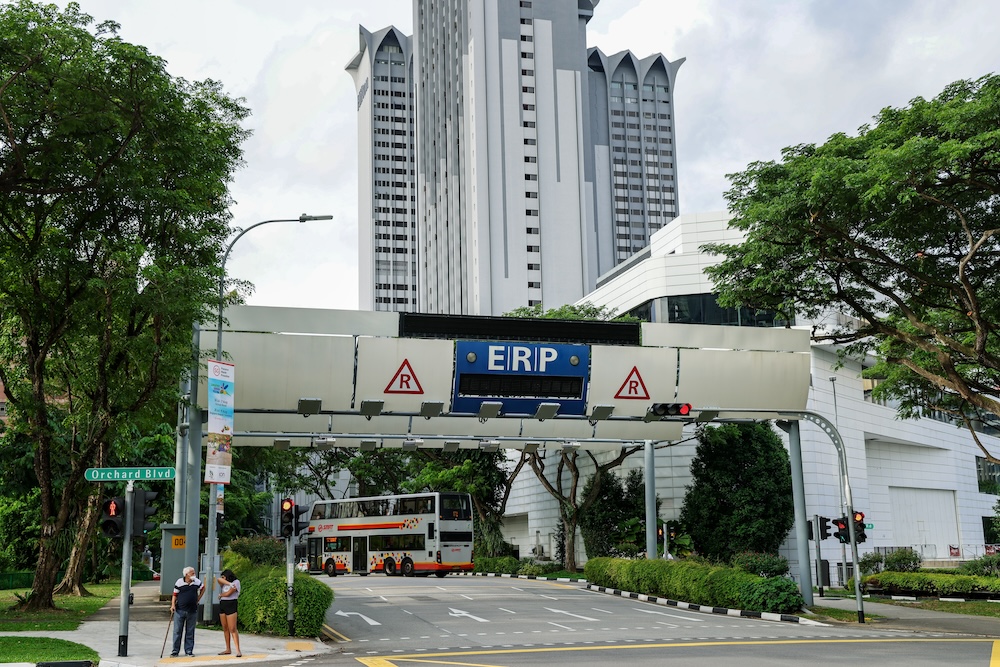 Singapore-Specific Systems: ERP Gantries and GLIDE Traffic Control
Singapore-Specific Systems: ERP Gantries and GLIDE Traffic Control
- Electronic Road Pricing (ERP) Gantries: ERP gantries charge vehicles automatically during peak hours to manage congestion in high-traffic areas like Orchard Road or CBD zones. Warning signs ahead of gantries display toll rates and operating hours.
- Green Link Determining (GLIDE) System: This smart system adjusts traffic light timings based on real-time data from sensors embedded in roads, optimizing flow during peak periods.
Driving Safely on Expressways and Tunnels
Singapore’s expressways have unique rules:
- Always adhere to speed limits displayed on overhead gantries.
- Watch for EMAS (Expressway Monitoring Advisory System) alerts about accidents or congestion.
- In tunnels like KPE or MCE, maintain safe distances between vehicles due to limited visibility.
Driving in Singapore
Understanding Singapore’s road signs and traffic signals is vital for safe driving in this bustling city-state where efficiency meets precision on the roads. By familiarising yourself with these visual cues—whether regulatory, warning, or informational—you can navigate confidently while avoiding fines or demerit points.
For more detailed information on driving rules in Singapore, visit OneMotoring. Stay informed, drive responsibly, and contribute to safer roads for everyone.



